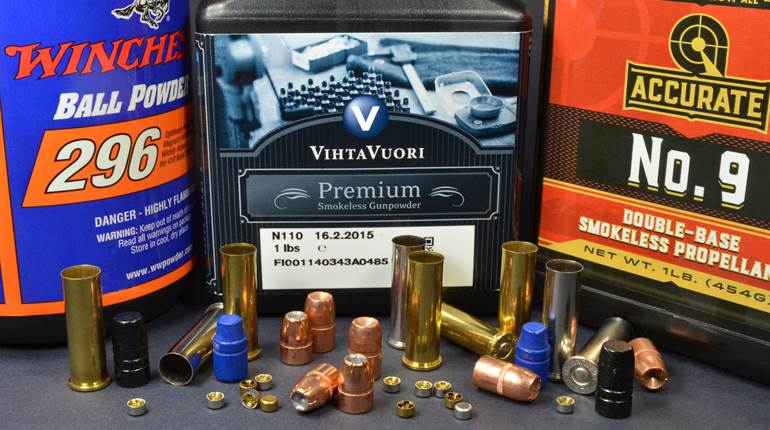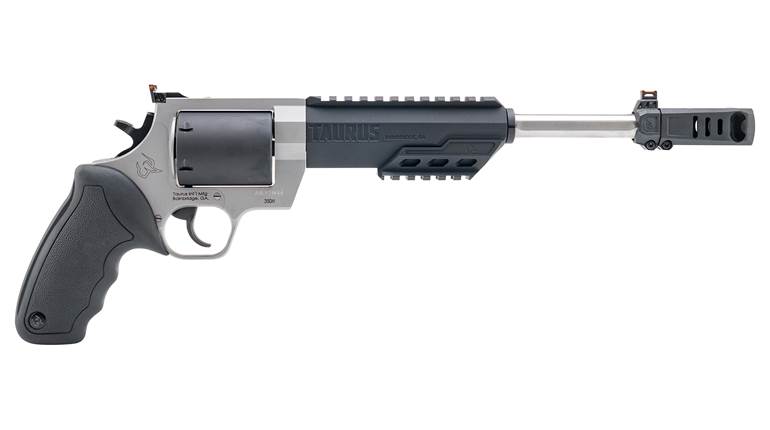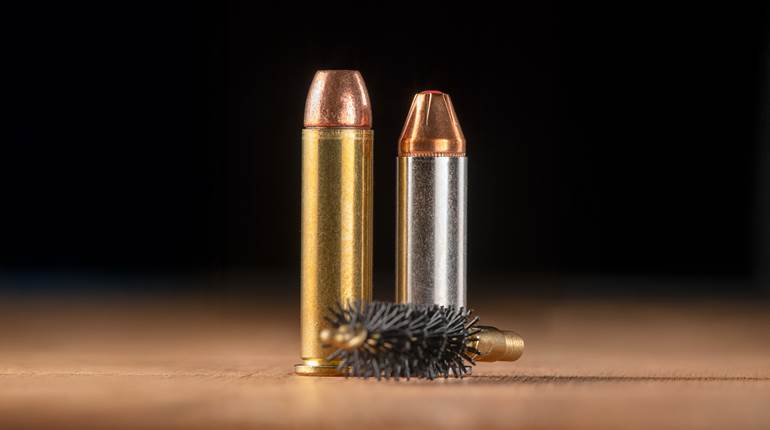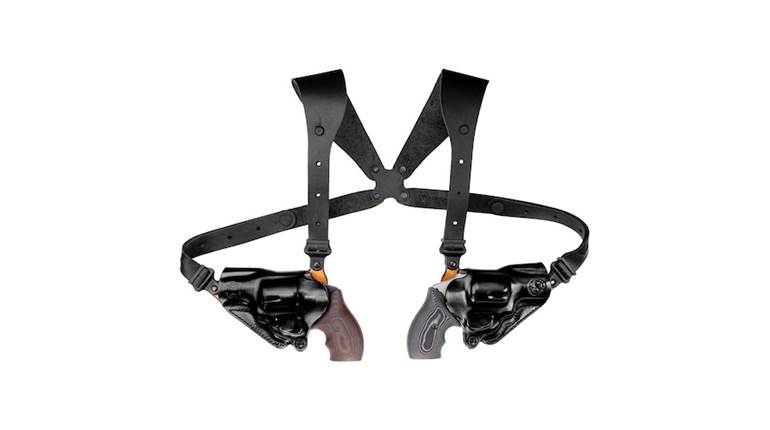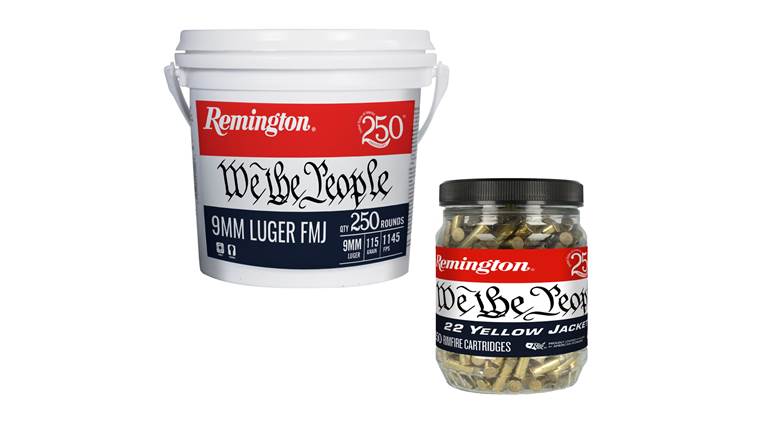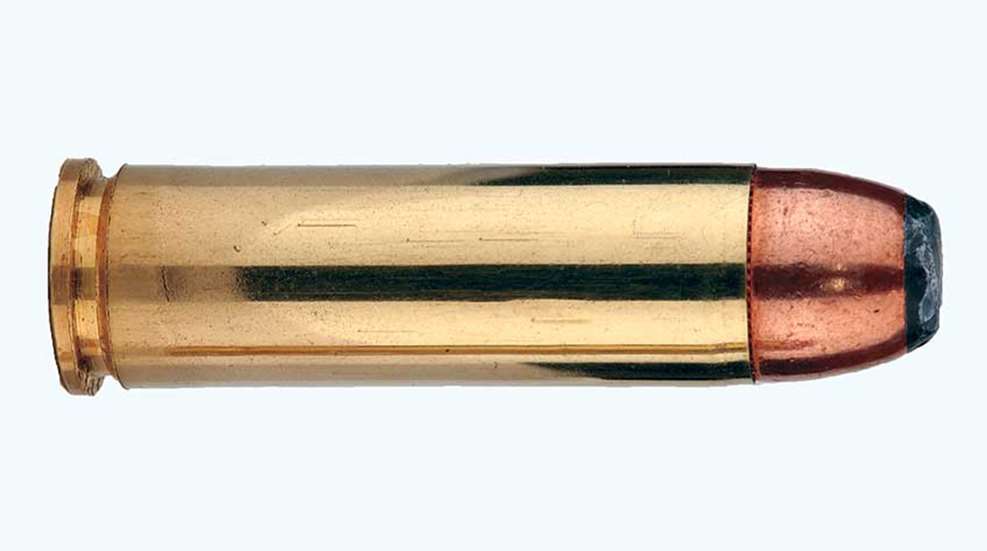
This article appeared originally as ".500 S&W Magnum" in the May 2003 issue of American Rifleman. To subscribe to the magazine, visit the NRA membership page here and select American Rifleman as your member magazine.
Sure, some handguns are chambered for more powerful rifle cartridges, and who knows what some wildcatter out there may have concocted, but when it comes to true mass-produced, commercially available handgun cartridges, the .500 S&W Magnum is the most powerful round on Earth. The Smith & Wesson X-Frame revolver designed to handle it might also hold the speed record for going from an idea to an actual working gun.
Introduction of the .500 S&W Magnum is the period at the end of a sentence stating that Smith & Wesson re-established itself as an American handgun icon—a status it lost in the backlash of its now infamous agreement with the Clinton administration. Today, the executives who took that poor decision are gone, and the agreement is a bad memory. Smith & Wesson is again American-owned, and makes the gun chambered for the most powerful handgun cartridge in the world.
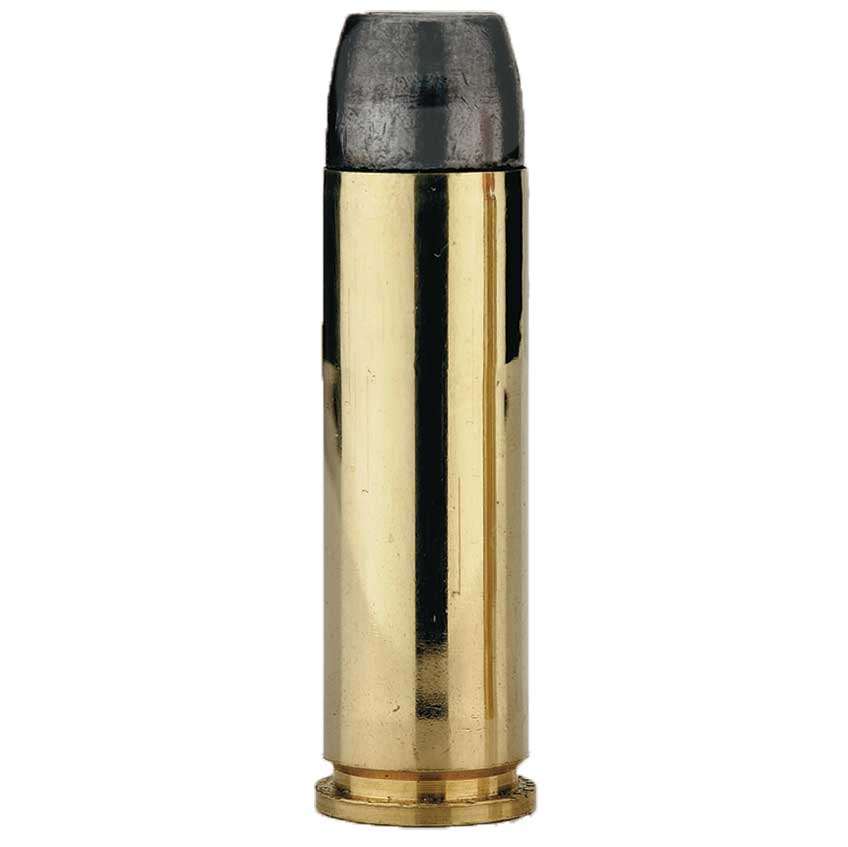
The "S&W Magnum" moniker was attached to “the most powerful handgun in the world," prompting Clint Eastwood to ask, “Do you feel lucky, punk?” it set S&W apart from every other handgun maker. The .44 Mag. really wasn’t the most powerful handgun in the world then, but the perception that it was benefited S&W in status and sales.
The more powerful .454 Casull eventually came of age and in 2001, Hornady and Ruger introduced the .480 Ruger cartridge. While those weren’t the most powerful handgun cartridges in the world at that time either, they were perceived as so by many because they were readily available and one-upped the .44 Mag.
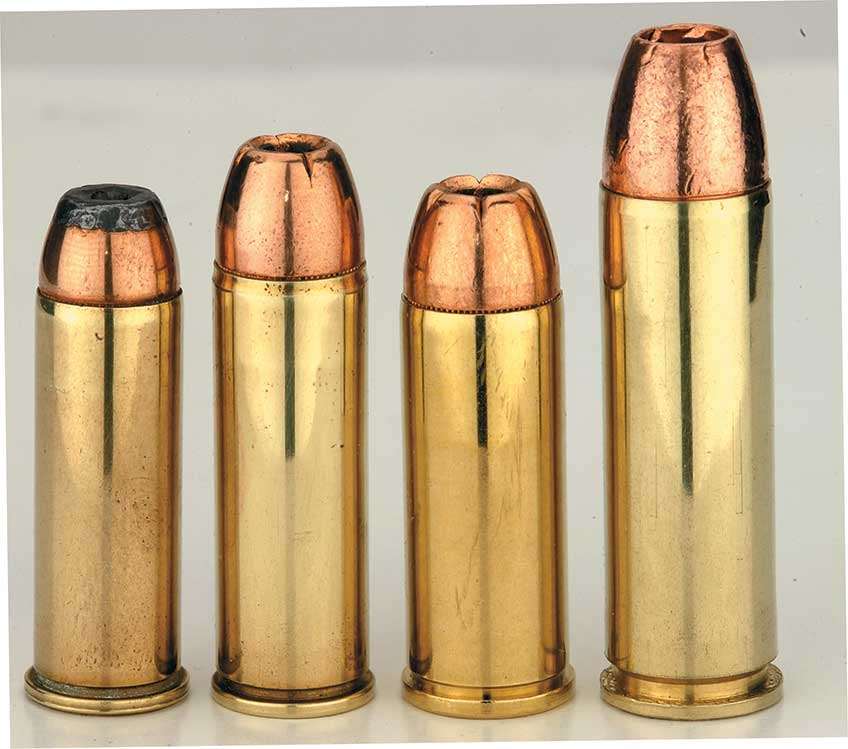
That perceived power play didn’t sit well with the employees at S&W, which formerly held the crown—particularly with its Handgun Production Manager Herb Belin, who has been a driving force in many of S&W’s more recent technological advances. Herb’s mandate for S&W to regain the title was to come up with a cartridge that, as he puts it, “is unsurpassed and may be unsurpassable.”
Smith & Wesson employees, who had to sit by helplessly as the company’s British former owners nearly destroyed the great American company, took the world’s most powerful handgun cartridge from idea to production in only 10 months.
The Origin of the .500 S&W Magnum
The story of how the new gun and cartridge came to be is actually a very short one. After the 2002 SHOT Show, Belin decided that S&W needed to regain the power title and contacted Peter Pi at Cor-Bon—an ammunition maker known for pushing cartridges’ limits—and asked Pi to get back with him if he thought it could be done.
Pi literally walked across Industry Road in Sturgis, S.D., to Jamison Int’l, Inc. where Cor-Bon gets its brass cases and asked owner Marc Jamison what he thought. The next day, Jamison delivered dummy cartridges to Pi. The cartridges were made from whole-cloth with no “parent” case. Pi overnighted them to Belin, and Belin said “yes.”
While Cor-Bon got to work on load development, Belin put S&W engineers to work designing the cylinder. The engineers, Rich Mikuta and Brett Curry, were schooled to use the latest in SolidWorks design software that eliminates all of the “cut and try” of more traditional development work.
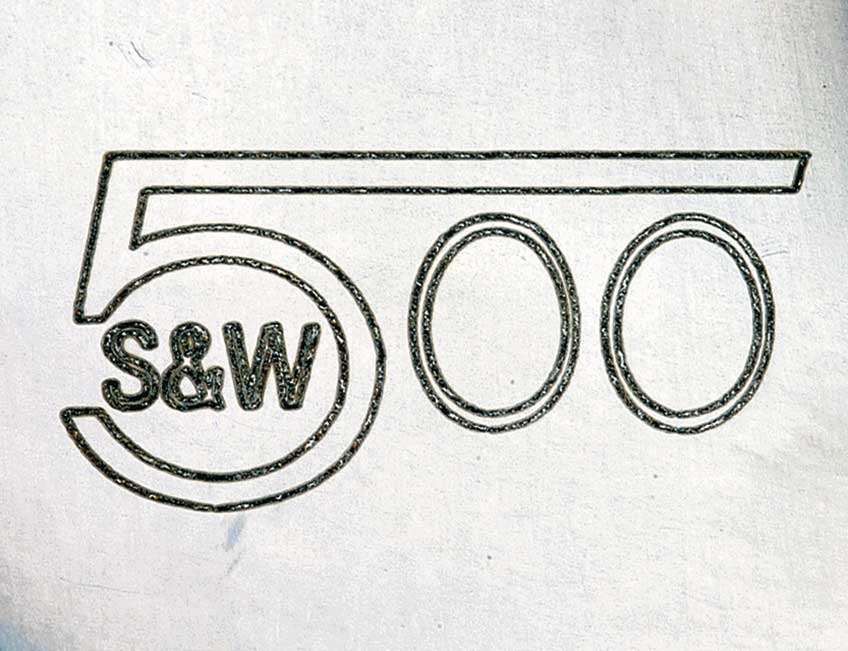
While this is a terrible oversimplification of how it all came together, the engineers essentially told the computer program the dimensions of the cartridge and its pressure, the strength of the metal, and the cylinder capacity, and— “wallah”—an accurate electronic 3D image that was exported to a CNC machine center.
A chunk of metal was put in the CNC machine, the machine turned on, and in a short period of time, the first X-Frame cylinder was produced. A fixture was made to allow S&W to pressure test the cylinder to destruction. It passed with a great margin of safety, and the go-ahead to design the frame was given.
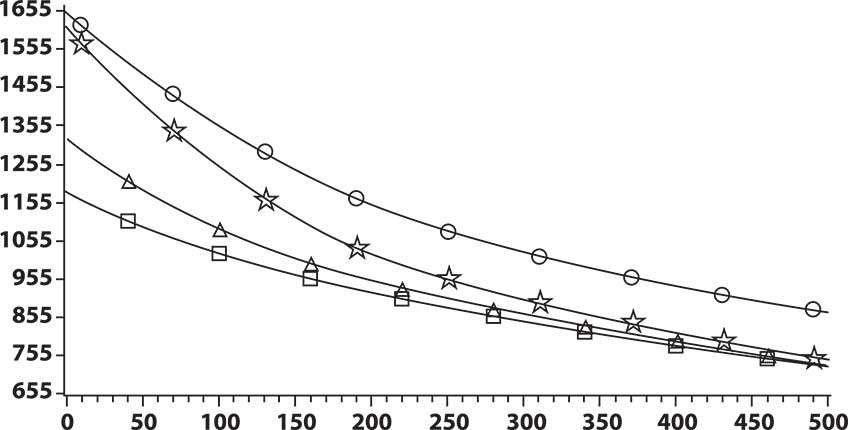
The frame was also designed using SolidWorks and, before long, the first X-Frame parts—truly the first production parts—were made and the very first S&W Model 500s were assembled. That’s right; no prototypes, just done correctly from the start.
The First Three .500 S&W Magnum Loads
Cor-Bon came up with three different loads for the .500 S&W Mag. The first can only be called a remarkable deer or antelope load. It uses the same .50-cal., 275-gr. all-copper bullet Barnes offers in .54-cal. sabots for muzzleloaders.
At a factory claimed 1665 f.p.s. from the 83⁄8”-barreled Model 500, this big number reliably expands fully to around 1” in diameter early in its penetration. Muzzle energy for this, the “light” load of the trio, is around 1,700 ft.-lbs., and at 100 yds. it packs about the same wallop as a 300-gr. .454 Casull.
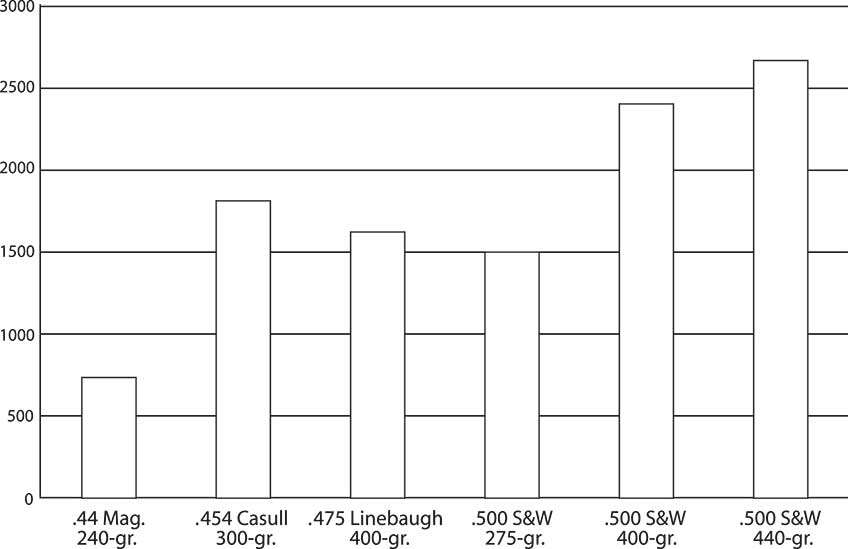
Cor-Bon’s middle number uses a 400-gr. jacketed soft-point from Hawk Bullets in Salem, N.J. Hawk is a maker of specialty bullets including the ones I use in my .400 Marlin wildcat and has earned a good reputation for matching the construction of its bullets to specific velocities and applications for optimal performance.
This .50-cal. bullet leaves the muzzle of the 83⁄8” barrel at a cataloged 1675 f.p.s., but the greater bullet weight puts its muzzle energy ahead of even 300-gr. .45-70 Gov’t loads from a rifle. The design of this bullet makes it the all-arounder of the three, being suitable for hunting perhaps anything in North America as it combines deep penetration with reliable expansion.
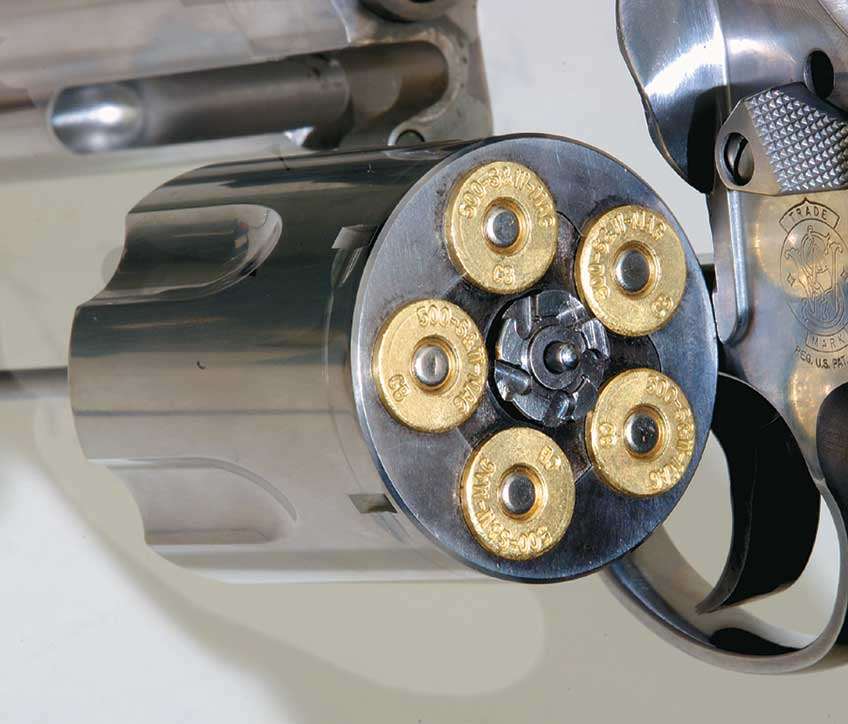
The final load is a little intimidating, even to a seasoned magnum handgunner. I know I approached it with some trepidation. It launches a deep-penetrating 440-gr. flat-nose, hard-cast bullet—from Cast Performance in Riverton, Wyo.—that is listed at a bone-smashing 1625 f.p.s.
It’s so hard a bullet that it shouldn’t expand, relying instead on the “WFN” bullet design pioneered by Lead Bullet Technologies to obtain its terminal performance. It has 2580 ft.-lbs. of muzzle energy—more than the 147-gr. 7.62 NATO round—and at 100 yds. still has about the same energy as the 275-gr. .500 S&W Mag. bullet at the muzzle. Pressure for all loads is less than 50,000 p.s.i., and case capacity is around 66.3 grs. of water.
The .500 S&W Magnum Revolver: Smith & Wesson's X-Frame
S&W’s X-Frame is huge—comparable in size to Magnum Research’s BFR that chambers such big boys as .45-70 Gov’t or .450 Marlin rifle cartridges. But it’s not just a scaled-up N-Frame.
For one thing, its 2.3”-long cylinder is a five-shot instead of six so the cylinder stop notches fall at the thickest part of the cylinder instead of at the thinnest as is typical with six-shot revolvers. It also had to be a five-shot because a six-shot would have been ridiculously huge. With a diameter of 1.92”, the five-shot cylinder is plenty big enough.
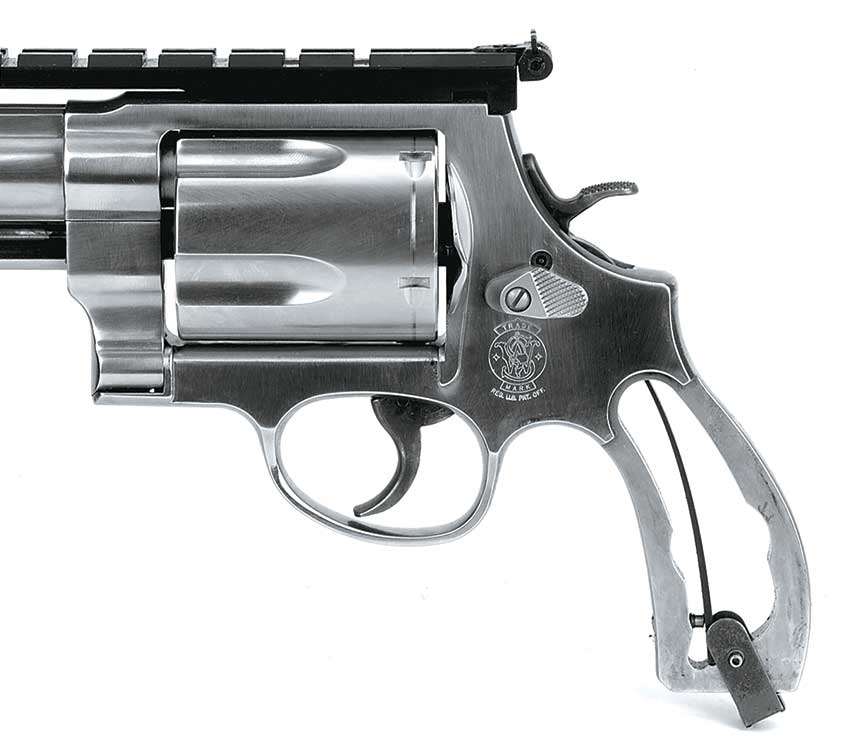
Another notable feature that makes the X more than just a scaled-up N is a ball detent lock-up in the front of the frame. Since the ball tends to want to stay at rest during recoil, it gets driven even harder into its locking recess in the yoke, locking the gun tighter when it recoils than when it’s at rest.
Also different is the grip frame, which is disproportionately small compared to the cylinder frame. I can’t imagine how big a proportional grip would be, but I’m fairly certain I wouldn’t be able to fit it in my hand. S&W realized the too-large-a-grip problem too, and so the X-Frame has a grip frame the same size as S&W’s K-Frame revolvers.
Where most S&W revolvers have a monogrip or grip panels that leave the metal backstrap exposed, the Hogue monogrip on the X-Frame generously covers the backstrap. The rubber grip is very thick where it meets the web of the hand and has a large gel bubble molded into it to absorb recoil.
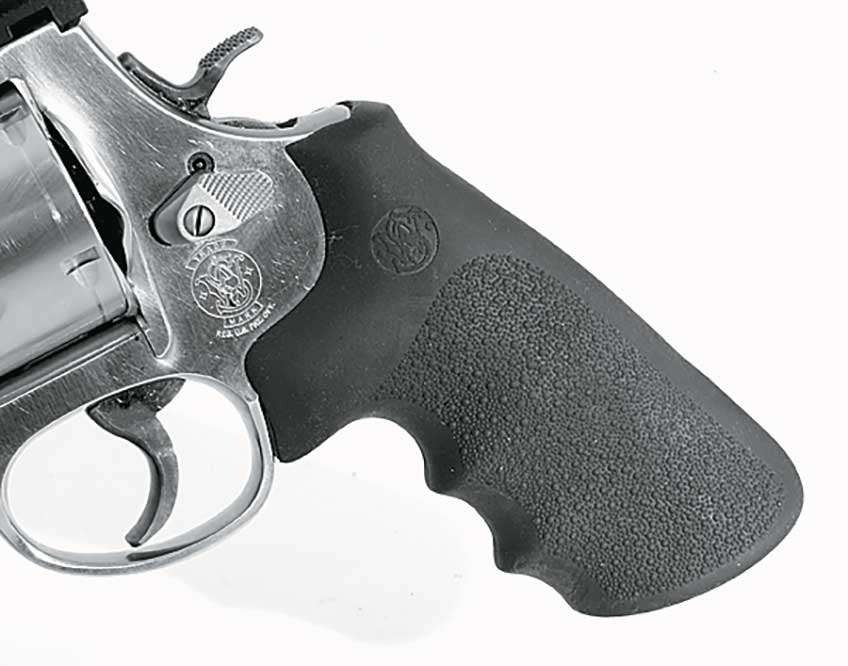
Also helping to reduce recoil is a compensator device that directs powder gases upward, reducing muzzle flip as well. The compensator fits on the end of the barrel shroud and is secured by a single Allen-head screw.
Sights consist of a fully adjustable rear unit and a replaceable front blade.
The top strap is drilled and tapped for scope bases, and when we field tested our sample it was outfitted with Warne rings and an S&W red dot sight. The machined steel Warne base system is made specifically for S&W K-, L-, N- and X-Frame revolvers, and has a recoil lug that fits in the rear sight recess in the top strap. Incorporated into the base is the ability to quickly detach the scope rings and use S&W factory iron front and rear sights on the base instead.
Shooting the .500 S&W Magnum
The most powerful handgun in the world has to be the most punishing to shoot, too. Right? I didn’t find that to be the case. I’ve fired big bores such as .44 Mag., .454 Casull, .480 Ruger and .50 AE to name just a few, and several center-fire rifle cartridges such as .30-’06 Sprg. and even .50-cal. muzzleloading barrels in T/C Contender and Encore single-shots.
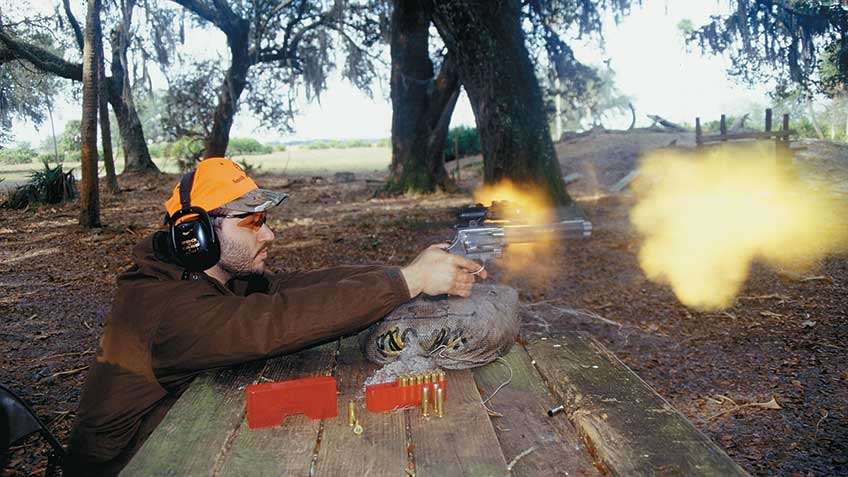
With that background, I’d rate the recoil of the 275-gr. .500 S&W Mag. load from the compensated 83⁄8” X-Frame in the same league as that of a short-barreled, steel-framed .44 Mag. revolver. The 440-gr. load, however, quickly becomes unpleasant to shoot. Recoil with it is more straight back than what I’m accustomed to in a large, double-action revolver suggesting to me that maybe the compensator at the muzzle works too well.
Hunting With the .500 S&W Magnum
When the opportunity presented itself to hunt wild boar with both a S&W Mountain Gun in .44 Mag. and the Model 500 in .500 Mag., I couldn’t say “no.”
“Troop,” the howling cur in the back of the pick-up truck verified that the big, black hog that had just run across the sandy trail was indeed a boar. Moby backed his horse out of the trailer, got up in the saddle and ordered the medium-sized red dog released.
Moby and Troop took off into the saw grass and Moby yelled back that Troop was onto two boars. I was up as the designated shooter, but Wayne Van Zwoll was next, so with two boars in the grass, Wayne and I both took off on foot with Bobby, our other guide, leading.
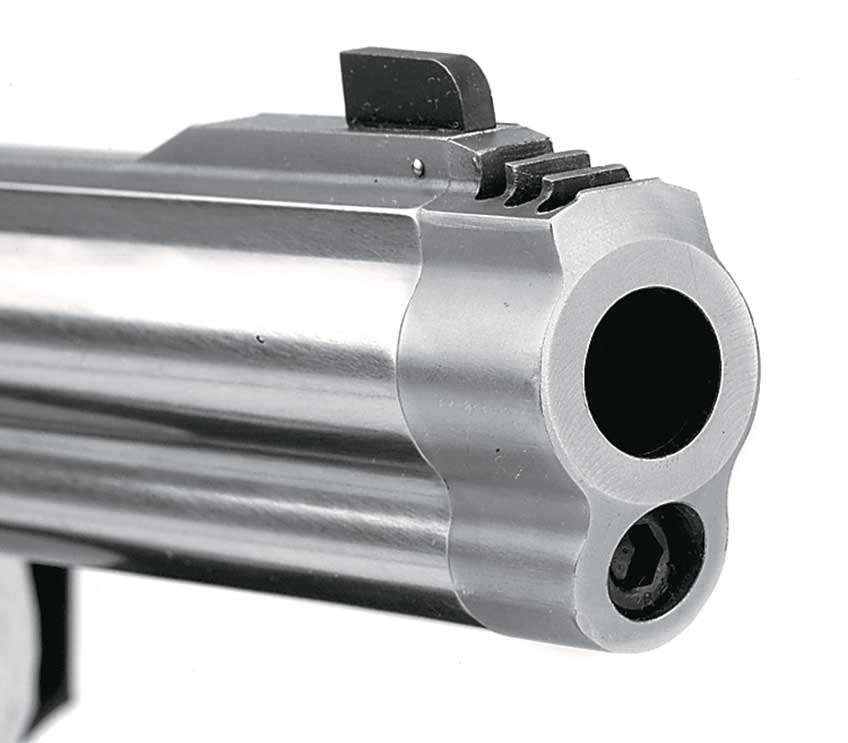
“There he is! Right there! Watch the dog!” Moby said from his perch. The black boar was big, and had a white stripe around it like an Oreo cookie. I was looking for a solid black hog and passed it up. Wayne didn’t and put it down with a single Winchester Supreme 250-gr. Platinum Tip Hollow-Point from the .44 Mag. Minutes later, Wayne’s finishing shot rang out across the marsh.
Troop took off after the second boar followed by Moby. They got deep into the grassy water before Moby got ahead of the boar and turned it. Bobby and I were running in water up to our knees to catch up to the solid black boar brought to bay by the excited cur. Three solid hits from the .44 later, the boar was dead and Troop was bleeding from a small tusk wound on his left ear.
The following morning found me up again as the designated shooter, but this time with the .500 S&W Mag. After a slow start with a different dog, Moby saddled up and turned Troop loose in a large flat of tall grass. In minutes, Troop was on to another big boar, and Bobby and I took off. The boar ran a few hundred yards, and we had to change directions only to have to boar make another run for thicker brush.
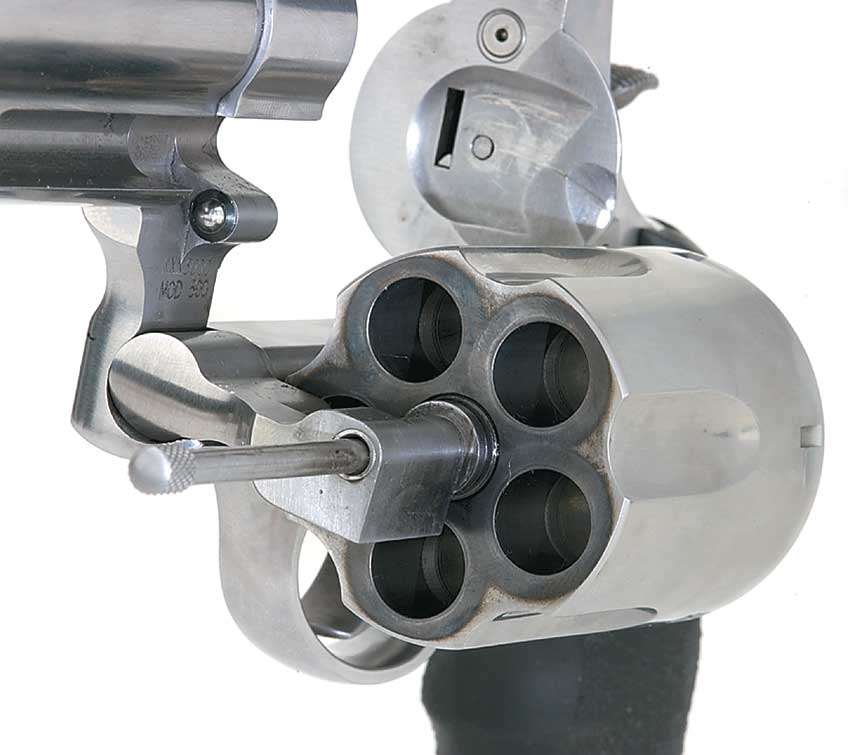
Troop finally brought the big boar to bay, the Model 500 roared, and the 400-gr. Hawk soft-point literally shut the boar off like a switch by entering between the neck and shoulder and exiting out the opposite flank and into the mud. Boars are big, tough animals, and every one we shot with the .500 S&W Mag. went “lights out” much faster than those shot similarly with the .44 Mags.
I have to admit that when I first heard about the .500 S&W Mag., I thought it was a gimmick meant to attract attention more than perform. But I now have to accept that I was wrong. I’ve found the possibly unsurpassable cartridge not only manageable, but practical as a big-bore hunting handgun cartridge.












